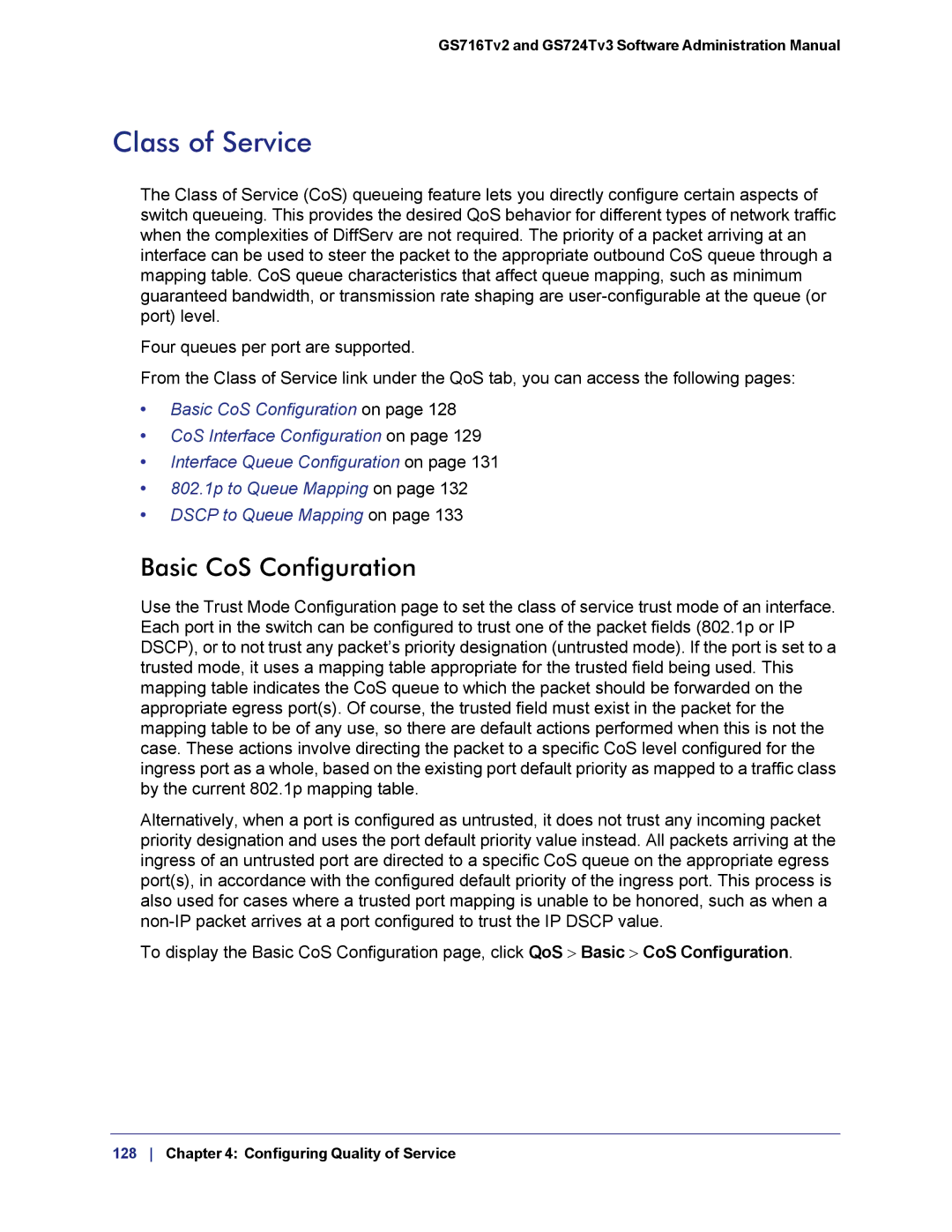GS716Tv2 and GS724Tv3 Software Administration Manual
Class of Service
The Class of Service (CoS) queueing feature lets you directly configure certain aspects of switch queueing. This provides the desired QoS behavior for different types of network traffic when the complexities of DiffServ are not required. The priority of a packet arriving at an interface can be used to steer the packet to the appropriate outbound CoS queue through a mapping table. CoS queue characteristics that affect queue mapping, such as minimum guaranteed bandwidth, or transmission rate shaping are
Four queues per port are supported.
From the Class of Service link under the QoS tab, you can access the following pages:
•Basic CoS Configuration on page 128
•CoS Interface Configuration on page 129
•Interface Queue Configuration on page 131
•802.1p to Queue Mapping on page 132
•DSCP to Queue Mapping on page 133
Basic CoS Configuration
Use the Trust Mode Configuration page to set the class of service trust mode of an interface. Each port in the switch can be configured to trust one of the packet fields (802.1p or IP DSCP), or to not trust any packet’s priority designation (untrusted mode). If the port is set to a trusted mode, it uses a mapping table appropriate for the trusted field being used. This mapping table indicates the CoS queue to which the packet should be forwarded on the appropriate egress port(s). Of course, the trusted field must exist in the packet for the mapping table to be of any use, so there are default actions performed when this is not the case. These actions involve directing the packet to a specific CoS level configured for the ingress port as a whole, based on the existing port default priority as mapped to a traffic class by the current 802.1p mapping table.
Alternatively, when a port is configured as untrusted, it does not trust any incoming packet priority designation and uses the port default priority value instead. All packets arriving at the ingress of an untrusted port are directed to a specific CoS queue on the appropriate egress port(s), in accordance with the configured default priority of the ingress port. This process is also used for cases where a trusted port mapping is unable to be honored, such as when a
To display the Basic CoS Configuration page, click QoS > Basic > CoS Configuration.
128 Chapter 4: Configuring Quality of Service
